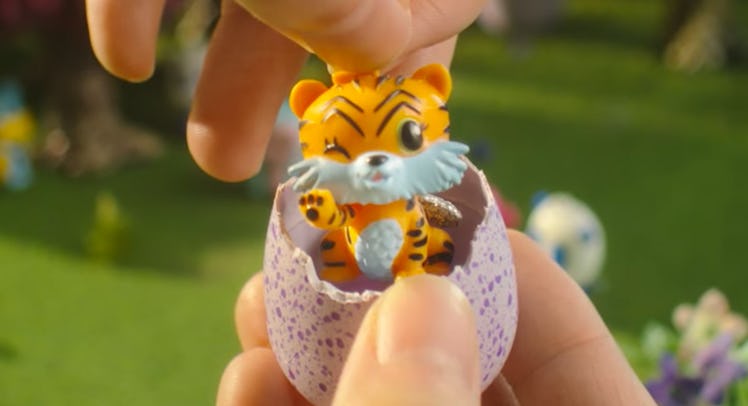New Hatchimal ‘CollEGGtibles’ Just Went On Sale
And prices are already going up.

Let the insanity begin … again. Hatchimals, last year’s hottest holiday toy that had parents frustrated and third-party price-gougers giddy, are back this summer. Hatchimals CollEGGtibles, a miniaturized version is set to hit stores on Monday but are already flying off shelves online. And the price is on the rise, too. Over a four-hour stretch Friday morning, it jumped on Amazon from $9.99, to $11.99, to $16.26.
The new Hatchimals CollEGGtibles are a little different from the originals. For one, they’re actually egg-sized this time. For another, instead of furry battery-powered birds that can peck its way out of a shell, they’re colorful plastic figures (tigers, cats, zebras) that belong to families with names like Giggle Grove, Lilac Lake, and Polar Paradise. Each family is identified by the speckles on its shell.
Of course, Hatchimals CollEGGtibles animals still need help hatching. Kids are instructed to rub a heart printed on the shell until it changes from purple to pink. At that point, it’s ready to be gently cracked and the mystery animal revealed. Spin Master, the Canadian company that makes Hatchimals, advertises more than 70 figures in the Season One release alone; and they fall into one of three groups for collecting/trading: common, ultra-rare, and limited edition. Of course, there’s a collectors map and guide so that kids know which ones they’ve got and how many more they need to pester Dad to buy.
While there was something of a backlash from parents online last year after a number of Hatchimals wouldn’t hatch, CollEGGtibles don’t require batteries so they shouldn’t suffer from the same technical glitches. That said, with prices already on the rise, who knows whether the craze will take off again or if parents will call bullshit. Hatchimals CollEGGtibles are targeted to kids age 5-and-up and come in single, two- or four-packs.
This article was originally published on